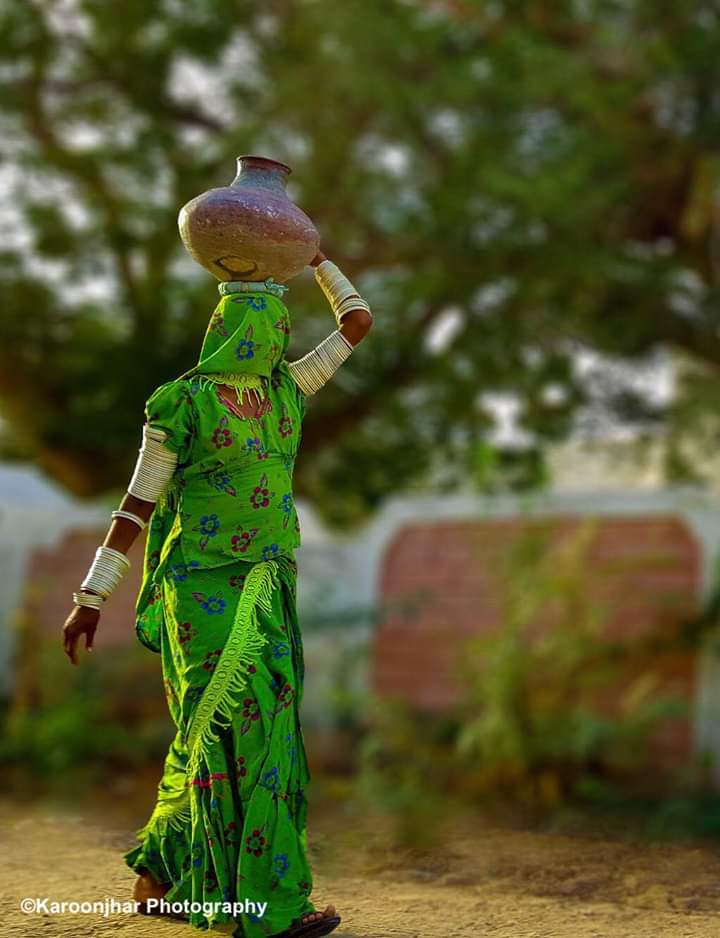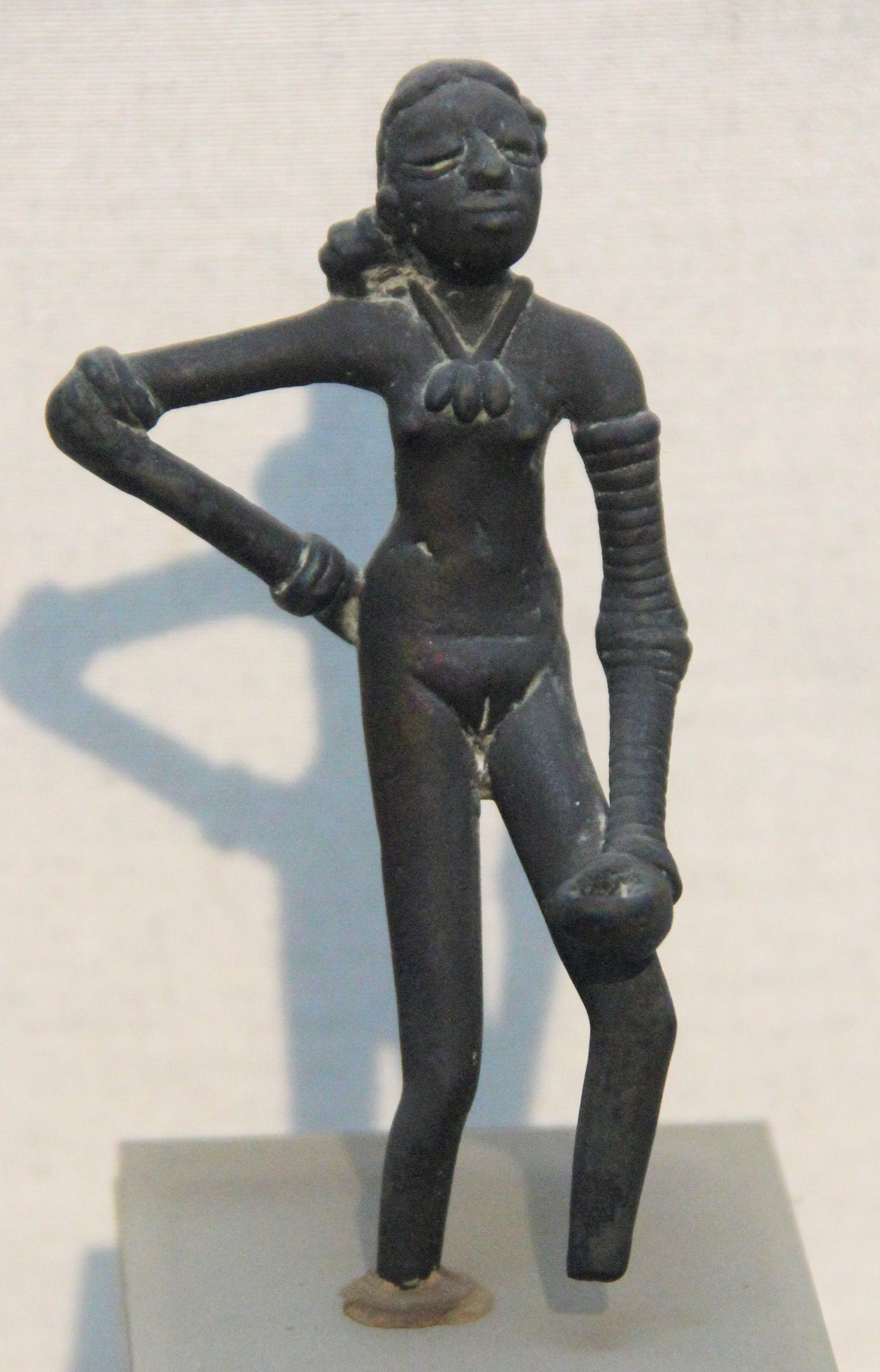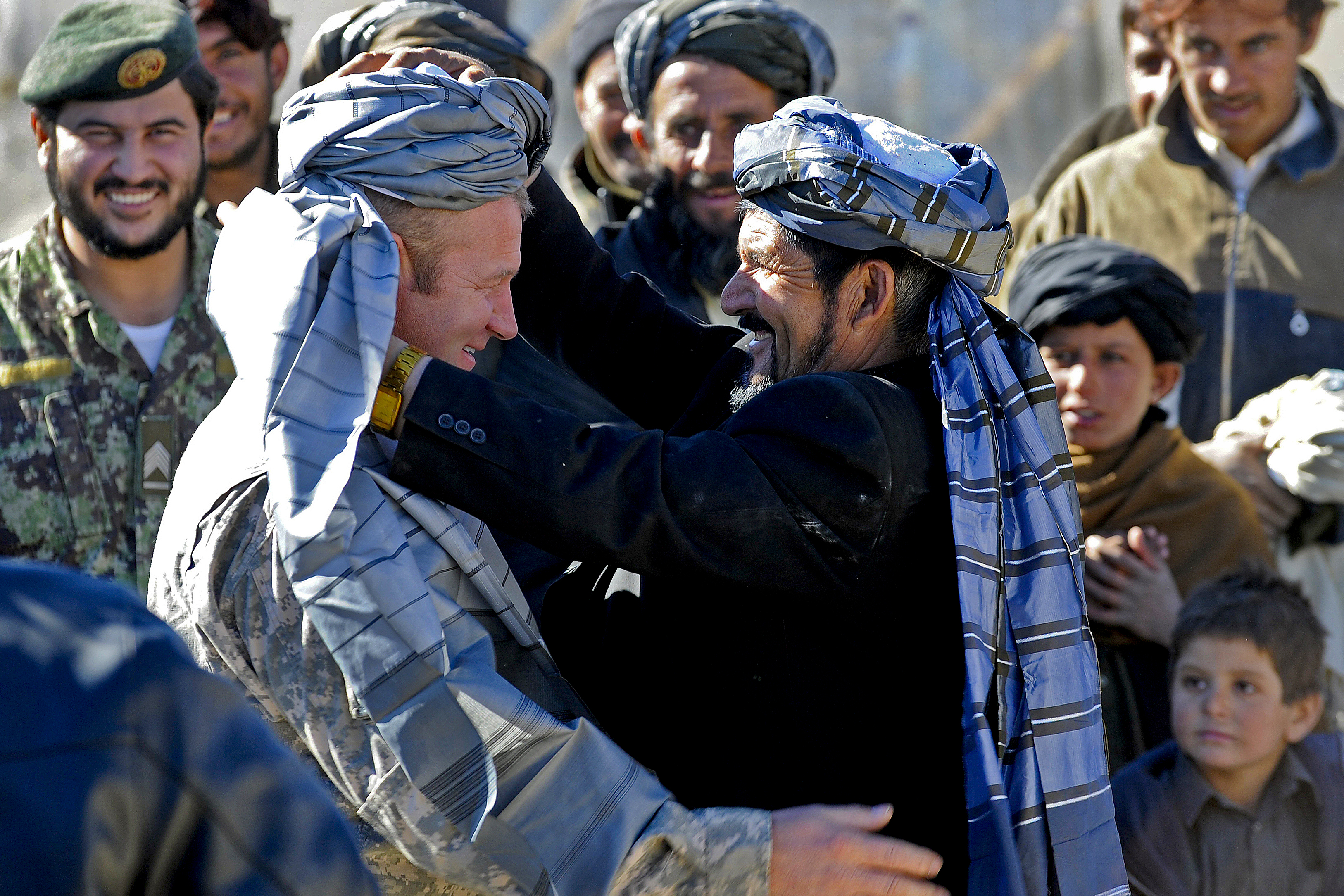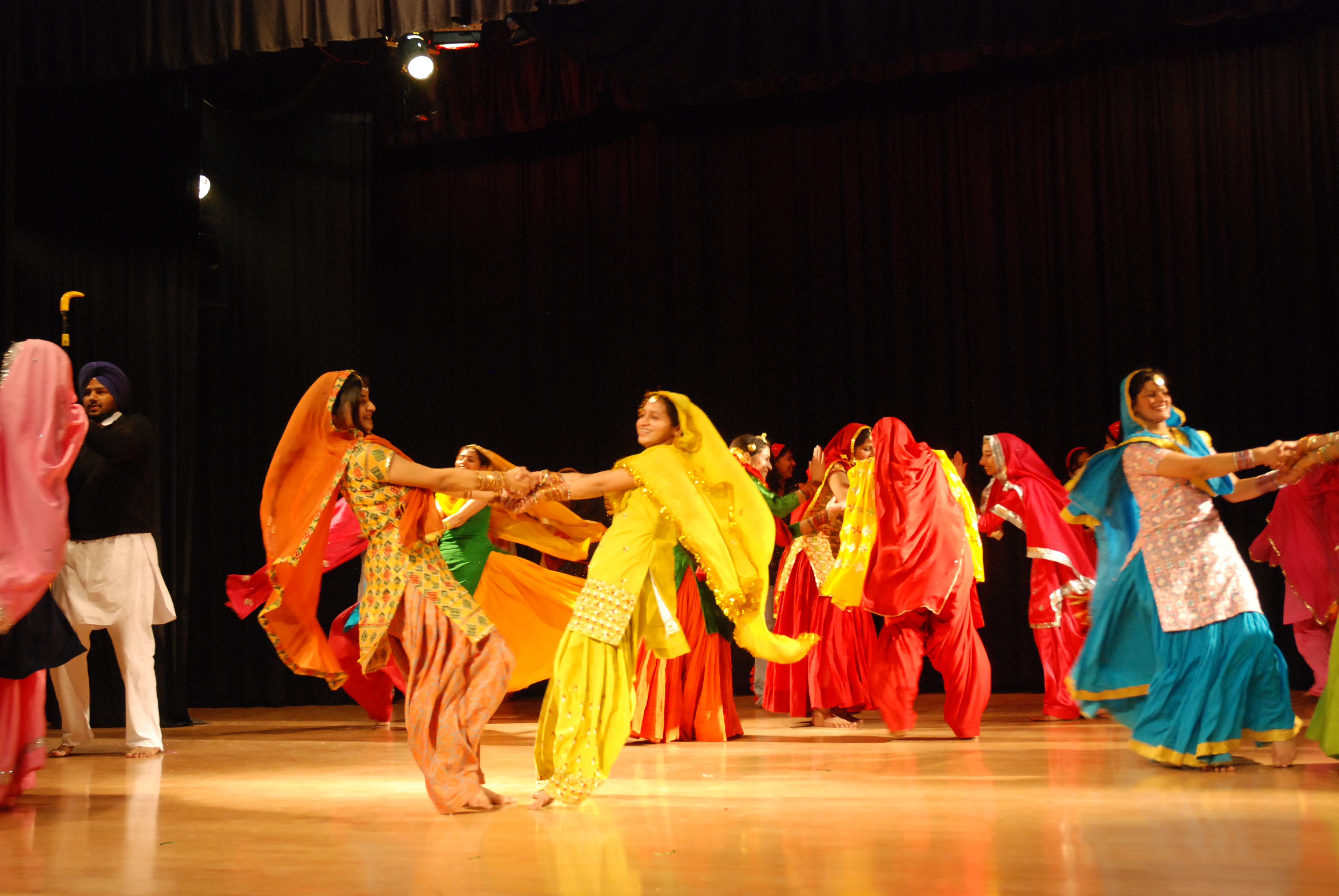|
Thari People
The Thari also known as the Dhatti (, ) are an Indo-Aryan peoples, Indo-Aryan ethno-linguistic group who reside in the Thar Desert, which is divided between Pakistan and India. They speak Thari, also known as Dhatki language. Thari is also a geographical term, it refers to anything which belong or come from Thar desert. The Thari people live primarily in Tharparkar district of Sindh in Pakistan. In India, Thari speakers are found in western parts of Rajasthan. Lifestyle and culture The Thar live in the harsh environment of the Thar Desert, therefore they spend a considerable amount of time fetching water for themselves or their animals. The Thari marry early, often during teenage years. They wake up early and herd the animals with the females waking up earlier than the men. The Thari are known for their carpet industry, and earlier in history they used to make shawls. The Thari also celebrate Lok Mela, along with the Sindhis. The Thari have suffered throughout history due ... [...More Info...] [...Related Items...] OR: [Wikipedia] [Google] [Baidu] |
Mirpur Khas Division
Mirpur Khas Division () is an administrative division of the Sindh Province of Pakistan. It was abolished in 2000 but restored again on 11 July 2011. formerly a part of Hyderabad Division. CNIC code of Mirpur Khas Division is 44. Mirpur Khas is the divisional headquarter of Mirpur Khas Division. It comprises the following three districts; Demographics Population According to 2023 census, Sukkur division had a population of 4,619,624, roughly equal to the population of Oman or the US state of Oregon. Religion The Mir Khas Pur division had a population of 4,228,683 as per 2017 Census of Pakistan. The Muslim population is 2,324,929 (54.98% of the division population), and the Hindu population is 1,892,758 (44.76% of the division population).Pakistan Bureau of Statistics https://www.pbs.gov.pk › 2017PDF SALIENT FEATURES OF FINAL RESULTS CENSUS-2017 List of the Districts List of the Tehsils Constituencies An electoral (congressional, legislative, etc. ... [...More Info...] [...Related Items...] OR: [Wikipedia] [Google] [Baidu] |
Thari Woman
Thari may refer to: * something of, from, or related to Tharparkar, a region of Sindh, Pakistan ** Thari people or the Dhatki, an ethnic group in Pakistan ** Thari language or Dhatki, spoken in Sindh, Pakistan * Tharri, a town in Larkana District, Sindh, Pakistan * Thari Mirwah, or Thari, a town in Khairpur District, Sindh, Pakistan * ''Thari'' (TV series), a 2019 Indian Tamil-language TV series See also * Thar (other) * Thali (other) * Tari (other) Tari may refer to: Places * Tari, Papua New Guinea, a town in the Hela Province of Papua New Guinea * Tari Urban LLG, a local-level government area of Papua New Guinea * Tari, Siliguri, a census town in Dajeeling district, West Bengal, India * ... * Thuri (other) {{Disambiguation, geo ... [...More Info...] [...Related Items...] OR: [Wikipedia] [Google] [Baidu] |
Indo-Aryan Languages
The Indo-Aryan languages, or sometimes Indic languages, are a branch of the Indo-Iranian languages in the Indo-European languages, Indo-European language family. As of 2024, there are more than 1.5 billion speakers, primarily concentrated east of the Indus river in Bangladesh, Northern India, Eastern Pakistan, Sri Lanka, Maldives and Nepal. Moreover, apart from the Indian subcontinent, large immigrant and expatriate Indo-Aryan–speaking communities live in Northwestern Europe, Western Asia, North America, the Caribbean, Southeast Africa, Polynesia and Australia, along with several million speakers of Romani languages primarily concentrated in Southeast Europe, Southeastern Europe. There are over 200 known Indo-Aryan languages. Modern Indo-Aryan languages descend from Old Indo-Aryan languages such as early Vedic Sanskrit, through Middle Indo-Aryan languages (or Prakrits). The largest such languages in terms of First language, first-speakers are Hindustani language, Hindi–Urdu ... [...More Info...] [...Related Items...] OR: [Wikipedia] [Google] [Baidu] |
Bangle
A bangle is a traditionally rigid bracelet which is usually made of metal, wood, glass or plastic. These ornaments are worn mostly by women in the Indian subcontinent, Southeastern Asia, the Arabian Peninsula, and Africa. It is common to see a bride wearing glass bangles at weddings in India, Bangladesh, Pakistan, Nepal, Sri Lanka and in other Asian countries. Bangles may also be worn by young girls, and bangles made of gold or silver are preferred for toddlers. Some men and women wear a single bangle on the arm or wrist called ''kada'' or ''kara''. Chooda is a kind of bangle that is worn by Hindu/Sikh Punjabi women on their wedding day. It is a set of white and red bangles with stonework. According to tradition, a woman is not supposed to buy the bangles she will wear . Firozabad, Uttar Pradesh is India's largest producer of bangles. History Bangles made from sea shell, copper, bronze, gold, agate, chalcedony, etc. have been excavated from multiple archaeological sites t ... [...More Info...] [...Related Items...] OR: [Wikipedia] [Google] [Baidu] |
Shalwar Qameez
Shalwar kameez (also salwar kameez and less commonly shalwar qameez) is a traditional combination dress worn by men and women in South Asia, and Central Asia. '' Shalwars'' are trousers which are atypically wide at the waist and narrow to a cuffed bottom. They are held up by a drawstring or elastic belt, which causes them to become pleated around the waist. The trousers can be wide and baggy, or they can be cut quite narrow, on the bias. Shalwars have been traditionally worn in a wide region which includes Eastern Europe, West Asia, Central Asia, and South Asia. The ''kameez'' is a long shirt or tunic. The side seams are left open below the waist-line (the opening known as the ''chaak''), which gives the wearer greater freedom of movement. The kameez is usually cut straight and flat; older kameez use traditional cuts; modern kameez are more likely to have European-inspired set-in sleeves. The kameez may have a European-style collar, a Mandarin collar, or it may be collarless; ... [...More Info...] [...Related Items...] OR: [Wikipedia] [Google] [Baidu] |
Turban
A turban (from Persian language, Persian دولبند, ''dolband''; via Middle French ''turbant'') is a type of headwear based on cloth winding. Featuring many variations, it is worn as customary headwear by people of various cultures. Communities with prominent turban-wearing traditions can be found in, Punjabis, the Punjabis, the Indian subcontinent, Southeast Asia, the Middle East, the Balkans, the Caucasus, Central Asia, North Africa, West Africa, East Africa, and amongst some Turkic peoples in Russia. A keski is a type of turban Majorly worn by female Sikhs, a long piece of cloth roughly half the length of a traditional "single turban", but not cut and sewn to make a double-width "Double Turban" (or Double Patti). Wearing turbans is common among Sikh men (Dastar), and infrequently women. They are also worn by Hinduism, Hindu monks. The headgear also serves as a religious observance, including among Shia Islam, Shia Muslims, who regard turban-wearing as ''Sunnah mu'akka ... [...More Info...] [...Related Items...] OR: [Wikipedia] [Google] [Baidu] |
Punjabi Culture
Punjabi culture grew out of the settlements along the five rivers (the name ''Punjab'', is derived from two Persian words, ''Panj'' meaning "Five" and ''Âb'' meaning "Water") which served as an important route to the Near East as early as the ancient Indus Valley civilization, dating back to 3000 BCE. Agriculture has been the major economic feature of the Punjab and has therefore formed the foundation of Punjabi culture, with one's social status being determined by landownership. The Punjab emerged as an important agricultural region, especially following the Green Revolution during the mid-1960's to the mid-1970's, has been described as the "breadbasket of both India and Pakistan". Besides being known for agriculture and trade, the Punjab is also a region that over the centuries has experienced many foreign invasions and consequently has a long-standing history of warfare, as the Punjab is situated on the principal route of invasions through the northwestern frontier of the Ind ... [...More Info...] [...Related Items...] OR: [Wikipedia] [Google] [Baidu] |
Ghagra Choli
Ghagra choli (also known as lehenga choli and chaniya choli) is a type of ethnic clothing for women from India, notably in the Indian states of Rajasthan, Gujarat, Madhya Pradesh, Uttar Pradesh, Bihar, Haryana, Punjab, Himachal Pradesh, Uttarakhand, Jammu and Kashmir and southern Nepal in Terai plains. In Punjab, the ''lehenga'' is traditionally worn with a kurti. It is a combination of the ''ghagra'' or ''lehenga'' (long skirt) and the '' choli'' (blouse). In contemporary and modern usage ''lehenga choli'' is the widely used term by fashion designers, trend setters, and boutiques in India, since ''ghagra'' is synonymous with the half-slip (petticoat) worn as an undergarment below the sari. Terms and history Historically, the gagra choli evolved from the three-piece attire worn by women in ancient India. The attire consisted of the '' antriya'' lower garment, the '' uttariya'' veil worn over the shoulder or head and ''stanapatta'' a chest band, which is mentioned in Sanskr ... [...More Info...] [...Related Items...] OR: [Wikipedia] [Google] [Baidu] |
Gujarati People
The Gujarati people, or Gujaratis, are an Indo-Aryan peoples, Indo-Aryan ethnolinguistic group who reside in or can trace their ancestry or heritage to a region of the Indian subcontinent primarily centered in the present-day western Indian state of Gujarat. They primarily speak Gujarati language, Gujarati, an Indo-Aryan language. While Gujaratis mainly inhabit Gujarat, they have a Gujarati diaspora, diaspora worldwide. Geographical locations Despite significant migration primarily for economic reasons, most Gujaratis in India live in the state of Gujarat in Western India. Gujaratis also form a significant part of the populations in the neighboring metropolis of Mumbai Metropolitan Region, Mumbai and union territory of Dadra and Nagar Haveli and Daman and Diu, formerly Portuguese Empire, colonial possessions of Portugal. There are very large Gujarati immigrant communities in other parts of India, most notably in Mumbai, Pune, Delhi, Kolkata, Chennai, Bangalore and other cities l ... [...More Info...] [...Related Items...] OR: [Wikipedia] [Google] [Baidu] |
Coal
Coal is a combustible black or brownish-black sedimentary rock, formed as rock strata called coal seams. Coal is mostly carbon with variable amounts of other Chemical element, elements, chiefly hydrogen, sulfur, oxygen, and nitrogen. Coal is a type of fossil fuel, formed when dead plant matter decays into peat which is converted into coal by the heat and pressure of deep burial over millions of years. Vast deposits of coal originate in former wetlands called coal forests that covered much of the Earth's tropical land areas during the late Carboniferous (Pennsylvanian (geology), Pennsylvanian) and Permian times. Coal is used primarily as a fuel. While coal has been known and used for thousands of years, its usage was limited until the Industrial Revolution. With the invention of the steam engine, coal consumption increased. In 2020, coal supplied about a quarter of the world's primary energy and over a third of its Electricity generation, electricity. Some iron and steel-maki ... [...More Info...] [...Related Items...] OR: [Wikipedia] [Google] [Baidu] |
Hindu
Hindus (; ; also known as Sanātanīs) are people who religiously adhere to Hinduism, also known by its endonym Sanātana Dharma. Jeffery D. Long (2007), A Vision for Hinduism, IB Tauris, , pp. 35–37 Historically, the term has also been used as a geographical, cultural, and later religious identifier for people living in the Indian subcontinent. It is assumed that the term ''"Hindu"'' traces back to Avestan scripture Vendidad which refers to land of seven rivers as Hapta Hendu which itself is a cognate to Sanskrit term ''Sapta Sindhuḥ''. (The term ''Sapta Sindhuḥ'' is mentioned in Rig Veda and refers to a North western Indian region of seven rivers and to India as a whole.) The Greek cognates of the same terms are "''Indus''" (for the river) and "''India''" (for the land of the river). Likewise the Hebrew cognate ''hōd-dū'' refers to India mentioned in Hebrew BibleEsther 1:1. The term "''Hindu''" also implied a geographic, ethnic or cultural identifier for ... [...More Info...] [...Related Items...] OR: [Wikipedia] [Google] [Baidu] |
Muslim
Muslims () are people who adhere to Islam, a Monotheism, monotheistic religion belonging to the Abrahamic religions, Abrahamic tradition. They consider the Quran, the foundational religious text of Islam, to be the verbatim word of the God in Abrahamic religions, God of Abraham (or ''Allah'') as it was revealed to Muhammad, the last Islamic prophet. Alongside the Quran, Muslims also believe in previous Islamic holy books, revelations, such as the Tawrat (Torah), the Zabur (Psalms), and the Injeel (Gospel). These earlier revelations are associated with Judaism and Christianity, which are regarded by Muslims as earlier versions of Islam. The majority of Muslims also follow the teachings and practices attributed to Muhammad (''sunnah'') as recorded in traditional accounts (hadith). With an estimated population of almost 2 billion followers, Muslims comprise around 26% of the world's total population. In descending order, the percentage of people who identify as Muslims on each ... [...More Info...] [...Related Items...] OR: [Wikipedia] [Google] [Baidu] |








